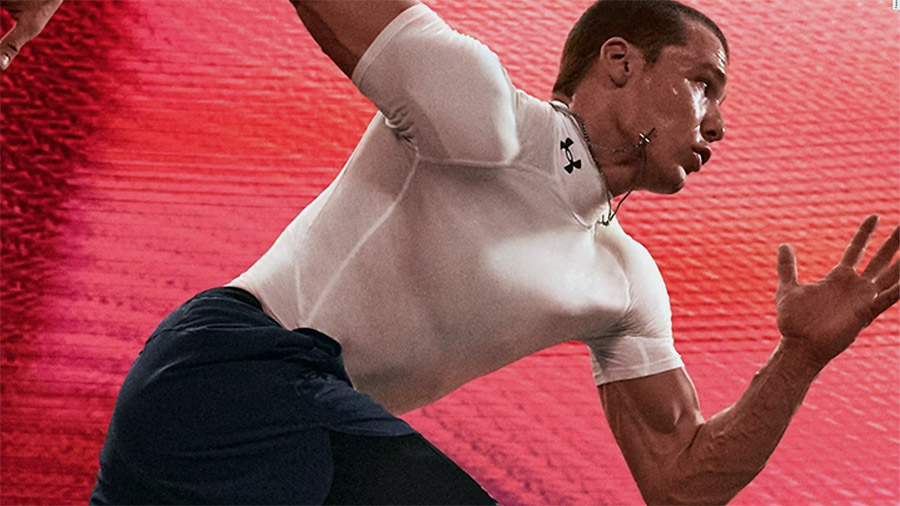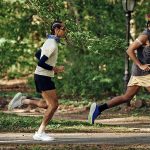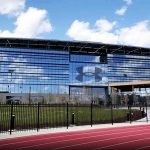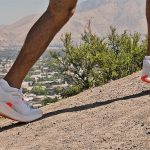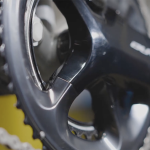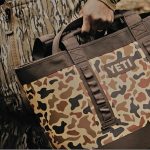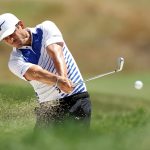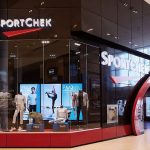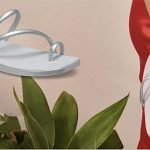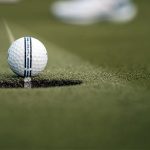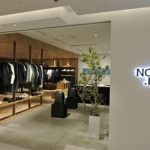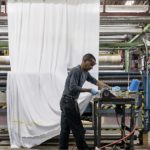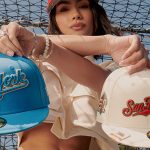Shares of Under Armour rose nearly 20 percent Thursday after the company notched a surprise quarterly profit before litigation-related charges as both gross margins and North America’s sales performance exceeded expectations. Under Armour slightly raised its outlook for the year.
Shares of Under Armour surged $1.23, or 19.0 percent, to $7.70 on the day.
“I’m pleased that we started the year ahead of expectations and I’m encouraged by the early progress we’re making in executing our Protect This House strategy,” said Under Armour President and CEO Kevin Plank, on a call with analysts. “Our renewed energy and alignment are proving to be critical enablers as we work to deliver superior products and storytelling while driving efficiencies, reducing promotional activity and complexity.”
In the fiscal first quarter ended June 30, sales fell 10.1 percent to $1.18 billion, slightly ahead of analysts’ consensus estimate of $1.15 billion. Revenues on a constant-currency (cc) basis were down 10 percent.
Under Armour posted a net loss of $305.4 million, or 70 cents a share, in the quarter after charges of $274 million related to litigation reserve expense. On June 21, Under Armour announced that it had agreed to pay $434 million to settle a 2017 class action lawsuit accusing the sports apparel maker of defrauding shareholders about its revenue growth to meet Wall Street forecasts.
The loss also reflects the recognition of $25 million of restructuring and impairment charges and $9 million of other related transformational expenses related to a Protect This House restructuring program announced this past May.
Excluding these charges, earnings reached $3.7 million, or 1 cent a share, surpassing analysts’ consensus target calling for a loss of 8 cents and company guidance of a loss between 10 cents to 8 cents. The beat was attributed to the North America revenue and gross margins outperformance as well as better SG&A expense control. In the 2023 first quarter, net income was $10.1 million, or 2 cents a share.
North American Q1 Sales Drop 14 Percent
By region, North America still delivered the worst performance despite exceeding plan with sales down 14.2 percent to $709.3 million. On the call, CFO Dave Bergman said the North American decline was due to softer full-price wholesale demand and lower sales to the off-price channel. The North America DTC business was also down during the quarter, driven mainly by efforts to reduce promotional activity within the e-commerce channel as well as a decline in brick & mortar retail sales.
In EMEA, sales inched up 0.1 percent to $226.9 million and were flat on a currency-neutral basis. Strength in EMEA’s DTC business offset a slight decline in wholesale. APAC revenue declined 10.1 percent to $181.8 million and was off 7 percent on a currency-neutral basis, driven by declines in wholesale and DTC businesses amid a softening macro that impacted consumer traffic and a highly competitive and promotional environment in the region.
The best-performing region was Latin America, with sales up 15.6 percent to $64.4 million, or 12 percent on a currency-neutral basis, with solid growth among regional distributors.
From a channel perspective, first-quarter wholesale revenue was down 8.3 percent to $68.5 million, driven by softer demand in its full-price and distributor businesses along with lower sales to the off-price channel. DTC revenue declined 11.8 percent to $480.2 million with a 25 percent decline in e-commerce the channel due to efforts to reduce promotions. Sales at owned stores were down 3 percent. Licensing sales declined 13.6 percent to $21.7 million due to weakness in North America and Japan.
By product type, apparel revenue was down 8.1 percent to $757.8 million with declines across most categories partially offset by relative strength in golf. Footwear was down 14.7 percent to $310.4 million with declines across most categories, partially offset by relative strength in outdoor and golf. Accessories sales declined 5.4 percent to $92.5 million.
Gross Margins Benefits from Reduced Promotions
Gross margins were up 110 basis points to 47.5 percent, exceeding Under Armour’s forecast calling for gross margins to be down 20 to 30 basis points.
This increase was driven by 170 basis points of pricing benefits due to lower levels of discounting and promotions, mainly in its direct-to-consumer business because of actions taken to reduce promotions as well as 40 basis points of supply-chain benefits related to lower product costs and lower inventory reserves. These benefits were partially offset by 60 basis points of headwinds from unfavorable regional and channel mix shifts and 50 basis points of unfavorable foreign currency impacts.
Bergman said the margin outperformance was because promotions came in less than planned in its DTC business as strategies to reduce promotional activity in the factory outlet stores not contemplated in the prior outlook, including less depth in discounts, proved effective. Inventory reserve needs were also lower than planned given a lower inventory balance and healthier overall composition. Finally, the quarter benefited from more year-over-year freight cost improvements compared to anticipations.
Operating Expenses Decline 6 Percent Excluding Litigation Costs
SG&A expenses surged 42 percent to $837 million in the first quarter. Excluding a litigation reserve net of an insurance receivable and transformation expenses, adjusted SG&A expenses were down 6 percent to $555 million, mainly due to ongoing cost management actions including headcount reductions and lower marketing expenses for the quarter. Under Armour has recognized $34 million of the estimated $70 million to $90 million in anticipated charges and expenses under existing restructuring plan announced in May.
Under Armour’s operating loss came to $300 million. Excluding the litigation reserve, transformation expenses and restructuring charges, adjusted operating income was $8.0 million, down 64.3 percent from $22.4 million a year ago.
Inventories were down 15 percent at the quarter’s end, ahead of expectations due to the revenue outperformance in the quarter and effective inventory management. Inventories at year-end are still expected to be in line with year-ago levels.
Restructuring Update
On the call, Plank provide a lengthy update on the brand’s turnaround efforts. He listed Under Armour’s progress since he returned to the CEO role four months ago:
- Implementing a nine-month go-to-market process to complement its 18-month calendar with the StealthForm Uncrushable Hat being the first delivered product and now available and in stock online;
- Beginning work to reduce its SKU style count by 25 percent over the next 18 months;
- Implementing a category management structure;
- Rightsizing the organization with a headcount reduction “that, while painful, is now complete.”
Plank also noted that Under Armour continues to invest in its management team with the announcement earlier this week that 26-year Adidas veteran Eric Liedtke joined the company as brand president and executive board member. Said Plank, “Complimenting one of the strongest product teams we’ve had in nearly a decade, Eric’s proven track record of transformational brand growth and strategy will be an incredible asset to our product and regional leaders and our broader executive leadership team at this crucial time. As EVP of brand strategy, Eric will oversee our brand marketing, corporate strategy, consumer insights, sports marketing, creative and loyalty functions. In addition, Eric will be tasked with building out our marketing organization, including its go-forward leadership, that will report to him.”
He highlighted a number of opportunities Under Armour’s team is working on, including “being faster in bringing products to market, more intentional and committed storytelling for our launches, serving as a better business partner and driving deeper connections with athletes to ignite brand love.”
He also believes while there’s many fashion houses, “less than five brands” can be considered sports-first brands, including Under Armour. Among other benefits, the sports positioning gives Under Armour the opportunity to segment across, good, better and best pricing ranges. Plank said, “This is probably the most significant business advantage of being a sports house and why we believe we can drive a more premium positioning while not abandoning good level altogether.”
Plank highlighted progress on the three elements of the Protect This House restructuring effort, beginning with steps to build better products and storytelling. The effort is being led by Yassine Saidi, who was hired as chief product officer in January. Plank said, “By order of operations, product was the most immediate fix and frankly longest lead time UA needed to address. I’m very confident in the work this team is executing, including a more centralized vision across product merchandise and marketing that will enable us to correct our past inconsistencies, always editing and innovating to drive our brands forward.”
The brand is elevating its sportswear offering to provide wearing occasions for the 16-year-old to 24-year-old varsity team sport athlete the brand targets. Plank said, “This includes the launch of high-performance streetwear in Unstoppable, versatile style and athletic performance in Meridian, elevated warmups and sport-inspired looks in our Icon Fleece collection, Infinite and Phantom running launches. And finally in basketball, the Curry 12, along with the first signature shoe for De’Aaron Fox of the Sacramento Kings.”
The brand is also focused on improving its “demand creation ecosystem” with better storytelling aligned with merchandise. For instance, he said two-thirds of e-mails sent to North American customers last year were about discounts or promotions and one-third were focused on full-price selling and storytelling. He added, “This year, that ratio is now inverted, which, although early, is showing signs of positive traction and perception.”
In marketing, the brand is also increasing investments in paid social media influencers, extended its partnership with the University of Maryland, and announced a new partnership with USA Football to capitalize on growing interest in flag football.
In its quest to reduce complexity, Planks noted that making “frankly too many products that, without proper segmentation and marketplace differentiation, have challenged brand affinity.” In reducing SKUs, the brand “is being surgical in this effort, distorting toward areas of opportunity with the highest returns both financially and strategically from a brand-building perspective, and purposefully over-indexing towards better and best level products as we elevate our brand positioning.”
The third priority, elevating consumer experiences, includes a push toward more premium positioning across DTC channels while also working on improving storytelling and segmenting with wholesale partners. Plank said, “We’re changing the script on what it means to be a UA partner and are committed to strengthening our crucial account relationships in each distribution tier.”
He concluded, “Though early in our journey to reconstitute Under Armour’s brand strength, we’re making tangible progress in building a more premium product offering. We’re running smarter plays by tightening up our SG&A, reducing SKUs and materials and beginning to elevate consumer shopping experiences. Amid the early progress we’re making and Eric coming on board to fill a critical missing piece of our puzzle through the marketing lens, we’ll continue to empower and evolve our culture to reduce complexity and be more deliberate in everything we do. I have every confidence that our improving level of execution will result in a better presentation of the Under Armour brand through building this sports house. There’s much to do, but we’re undeniably back on offense.”
Outlook
Under Armour updated its outlook for the year:
- Sales are still expected to decline at a low double-digit percentage rate. Sales in North America are now expected to decline in the range of 14 percent to 16 percent (previously a 15 percent to 17 percent decline). However, the North American improvement is expected to be offset by increasing market pressures expected in the APAC region for the balance of the year. International is expected to see a low single-digit percentage decline with APAC down at a high single-digit rate and flat revenues in EMEA.
- Gross margin is still expected to be up 75 to 100 basis points compared to the prior year. The better-than-expected margins in the quarter are expected to be offset by emerging ocean freight cost headwinds, developing negative foreign currency impacts, and a more unfavorable channel mix due to lower licensing sales and challenged margins in the off-price channel.
- Excluding the litigation reserve expense and the midpoint of total estimated charges and related expenses of our restructuring plan, adjusted SG&A are expected to decline at a low-to-mid single-digit percentage rate. Previous guidance called SG&A to be down 2 to 4 percent.
- Adjusted operating income is now anticipated to reach $140 million to $160 million versus the previous expectation of $130 million to $150 million.
- Adjusted EPS is expected in the range of 19 cents to 22 cents compared to previous guidance between 18 cents and 21 cents.
In the second quarter, sales are expected to be down approximately 12 percent, assuming continued wholesale softness and proactive strategies to reduce promotional activities in its DTC business, particularly in North American e-commerce.
Gross margin is anticipated to be up 20 basis points to 30 basis points due to benefits from lower product costing and less DTC discounting, partially offset by more expensive ocean freight and unfavorable foreign currency impacts. Adjusted SG&A is expected to decline at a high single-digit rate, partially driven by approximately 4 percentage points to 5 percentage points from an anticipated insurance recovery related to litigation expenses paid in prior periods. Additionally, this decline includes lower expenses related to headcount reductions and a shift in the timing of marketing expenses, which will be considerably higher in our third quarter. Q2 adjusted operating income is projected between $110 million to $120 million against $146 million a year ago; and adjusted EPS between 18 cents to 20 cents versus 24 cents a year ago.
Image courtesy Under Armour

